Exploring the Architectural and Economic Impact of Al Mansour Tower
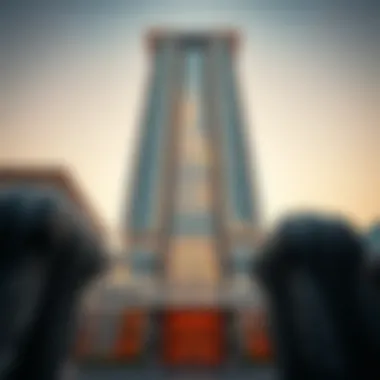
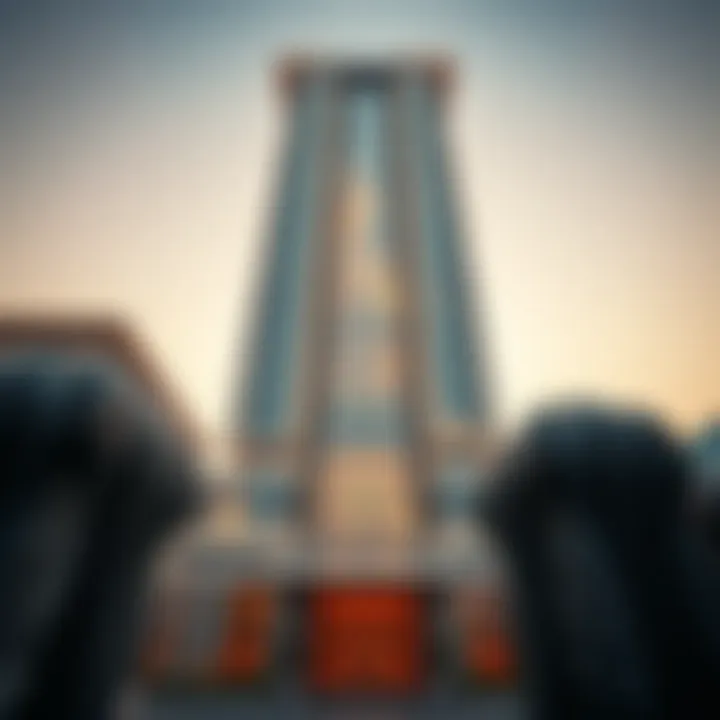
Intro
The Al Mansour Tower stands tall in Dubai, a striking symbol of modern architecture and a testament to the Emirate's rapid development. This article delves into several aspects of the tower, revealing its architectural significance, historical context, and impact on the local skyline. More than just a building, it represents a critical point in the evolution of Dubai's urban landscape, making it a point of interest not just for architecture aficionados but also for real estate investors and analysts.
Understanding the Al Mansour Tower requires a closer examination of its architectural design principles, the cultural narratives surrounding its construction, and the economic implications it poses for the local market. Moreover, with real estate trends continuously evolving, this analysis aims to shed light on how the tower fits into broader market dynamics, thereby offering insights beneficial for builders, investors, and anyone keen on grasping astute real estate decisions.
Market Trends
Current Real Estate Market Overview
Right now, Dubai's real estate market is heating up again after a few years of fluctuations. With increasing foreign investments and a focus on luxury properties, the environment is primed for strategic growth. Al Mansour Tower, with its prime location and exceptional design, plays a pivotal role in this revitalization. Investors are recognizing the rising demand for high-end commercial and residential properties as the city continues to expand.
The growing population and an influx of expatriates contribute to the vibrancy of the property market. Rental yields in certain districts, especially around landmark structures like the Al Mansour Tower, have shown promising recovery since the recent economic shifts. This growing interest makes it an ideal time for investors looking to capitalize on Dubai’s real estate offerings.
Emerging Neighborhoods and Investment Hotspots
In addition to the well-trodden paths of Dubai Marina and Downtown, certain neighborhoods are starting to catch investors' eyes. Areas like Dubai Creek Harbour, with its picturesque views and upcoming projects, are becoming investment hotspots. Similarly, regions surrounding the Al Mansour Tower are gaining traction for both residential and commercial purposes.
- Dubai Design District (D3): A creative hub, attracting artists, designers, and brands, aligning well with high-end lifestyle trends.
- Jumeirah Village Circle (JVC): Offers a blend of affordable housing and luxury amenities, appealing to families and individuals alike.
- Business Bay: Close to the Al Mansour Tower, this area is famous for its upscale living and connectivity to major business centers.
Investors are starting to take notice that properties near landmark structures often appreciate more quickly and maintain higher desirability in the long run.
"Investing in real estate around iconic landmarks not only facilitates higher rental incomes but also often leads to higher property appreciation rates."
As we dig deeper into specifics, the buying and selling process surrounding properties connected to or influenced by Al Mansour Tower will unveil noteworthy strategies for those engaged in Dubai's bustling real estate market.
Foreword to Al Mansour Tower
Al Mansour Tower stands not only as a physical structure but also as a beacon of architectural merit that encapsulates the dynamic spirit of Dubai. This introductory section delineates the critical aspects surrounding the tower's existence, addressing its significance within the broader context of the city. Moreover, it sets the stage for a comprehensive exploration of both its historical and architectural narratives, which are pivotal in understanding its role in Dubai's skyline and beyond.
Overview of the Tower
Nestled in the heart of Dubai, Al Mansour Tower soars impressively into the skyline, an embodiment of modern engineering and design excellence. Completed in the early 2000s, the tower claims a prominent spot among not just the tallest buildings in the city but also within the global architectural landscape. Rising to a height of 400 meters, its unique silhouette is instantly recognizable and serves as a testament to the skilled craftsmanship that went into its design.
Constructed with reinforced concrete and glass, the Al Mansour Tower includes 85 floors dedicated to a mix of residential, commercial, and recreational spaces. The building isn’t merely about height; it reflects sophistication in every corner. Large windows snake around its exterior, allowing natural light to flow inside and giving inhabitants stunning views of the vibrant Dubai landscape. The spacious lobbies are adorned with intricate designs and local art, making every entrance a welcoming experience.
This tower is more than just another skyscraper; it's a living space, a statement about luxury, comfort, and modern lifestyle. The facilities within include state-of-the-art fitness centers, verdant gardens, and restaurants capturing the essence of Dubai's culinary diversity. Al Mansour Tower truly integrates lifestyle and architecture in a way that speaks volumes about contemporary urban living.
Significance in Dubai's Architectural Landscape
The architectural significance of Al Mansour Tower extends way beyond its mere structure. It epitomizes a phase of rapid growth and development within Dubai, reflecting the city's ambition and commitment to transforming into a global hub. As such, its importance is interwoven with the evolution of urban spaces in the region.
From the onset, the tower challenged traditional building norms, incorporating cutting-edge technology and design principles that set it apart from predecessors. This ambition resonates throughout Dubai, where innovation is often at the forefront of architectural discussions. The tower has garnered attention in various architectural forums and magazines, serving as a case study with regards to sustainable urban development and high-rise construction standards.
Moreover, Al Mansour Tower stands as a symbol of unity and progress, embodying the aspirations of millions who view it as part of their identity. It not only represents a physical landmark but also serves as a social hub where people converge, work, and grow. Its presence contributes to Dubai’s identity as a city that embraces both tradition and modernity, striking a balance that is often difficult to achieve in fast-evolving urban landscapes.
Historical Context of Al Mansour Tower
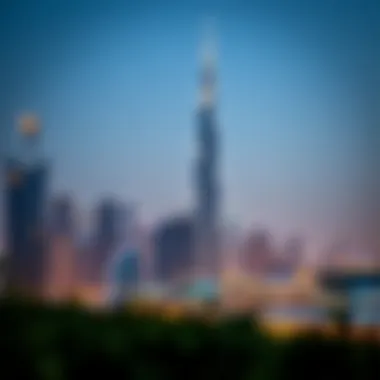
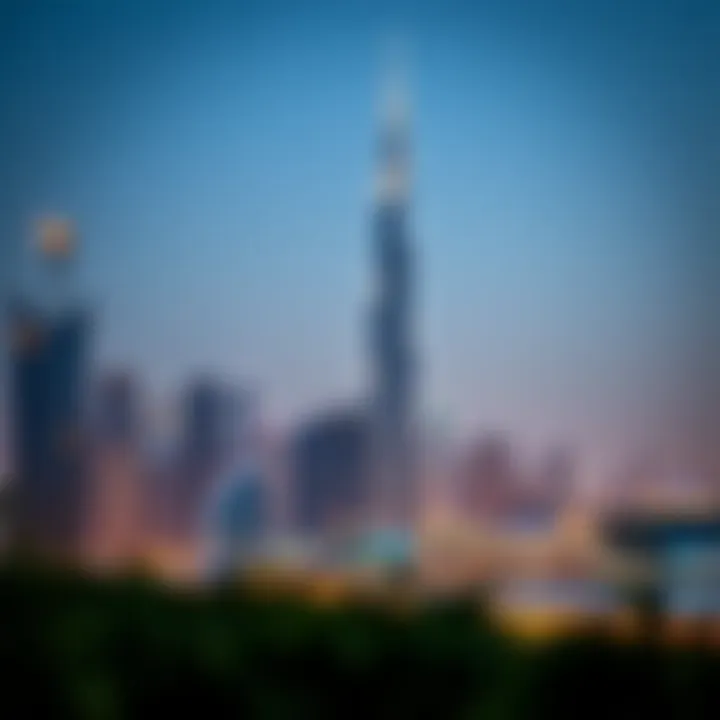
Understanding the historical backdrop of Al Mansour Tower is not merely about chronicling its construction but rather grasping the essence of its existence within Dubai's broader narrative. The architectural marvel stands as a testament to the rapid urban development that has come to characterize the region. By examining the timeline of construction, coupled with the architectural influences that shaped its design, we gain insight into the socio-economic and cultural dynamics prevalent at the time of its conception.
Timeline of Construction
The Al Mansour Tower’s construction signifies a pivotal moment in Dubai’s urban evolution. Groundbreaking for the Tower occurred in early 2010, amid a backdrop of economic boom characterized by a rush of skyscraper projects across the city. By 2012, the bulk of the structure had emerged from the ground, showcasing its ambitious design. After two years of meticulous work, the tower was officially completed in late 2014. This swift execution reflects not just architectural ambition but also the influx of foreign investments and expertise that marked Dubai’s construction landscape during that era.
Some key milestones in this timeline include:
- 2010: Groundbreaking ceremony, marked by ceremonial activities highlighting local traditions.
- 2012: Structural framework gains visibility, attracting local and international attention.
- 2014: Final completion, supported by a lavish opening ceremony that signified its importance.
- 2015 onwards: The Tower starts to attract tenants and visitors, slowly becoming integral to Dubai’s commercial fabric.
This timeline resonates with the ambitions of a city that refused to be confined by traditional architectural limitations, paving the way for a modern skyline.
Key Architectural Influences
The design of Al Mansour Tower isn’t born in isolation; it carries a multitude of influences reflective of Dubai's eclectic architectural landscape. The blending of modernism with traditional Arab aesthetics illustrates a desire to create a landmark that resonates locally yet commands recognition globally.
Several notable architectural influences can be pointed out:
- Islamic Geometry: Elements of Islamic art subtly woven into the facade demonstrate a respect for cultural heritage, despite its ultramodern appearance.
- Sustainable Innovations: Engineers and architects took cues from global trends towards sustainability, incorporating energy-efficient systems that align with Dubai's vision for a greener future.
- Brutalist Designs: The tower also indicates traces of brutalist structures, primarily in its bold, unembellished form, showcasing a raw expression of materials that some find radical yet grounded.
"The art of architecture is about bridging tradition and modernity; Al Mansour Tower embodies this principle through its seamless fusion of past inspirations with future technologies."
As we dissect these influences, it becomes abundantly clear that Al Mansour Tower is not just an edifice; it represents a confluence of ideas, ambitions, and the inexorable march towards progress in the heart of Dubai. Each element of its design narrates a part of the city’s story, providing investors and analysts a rich tapestry to consider when evaluating its value in the ever-evolving skyline.
Architectural Design Elements
The architectural design of Al Mansour Tower not only showcases the artistry involved in modern construction but also stands as a testament to the evolving skyline of Dubai. This section takes a closer look at the structural features, aesthetic considerations, and sustainability initiatives that define the tower and its contribution to the architectural landscape.
Structural Features
When discussing structural features, one must appreciate the innovative engineering that went into Al Mansour Tower. Designed to withstand the desert climate, the tower features a robust core made from high-strength concrete. Employing a frame system, it integrates shear walls that enhance stability during strong winds, a common occurrence in the region. The strategic use of reinforced concrete and advanced techniques guarantees both resilience and safety.
Additionally, the building includes cantilevered floors that jut out over the base, creating an impressive five-tiered structure. This design not only attracts the eye as it ascends but also optimizes space for offices and leisure areas. A key takeaway here is that the structural integrity complements the tower's ambitious height, reaching about 300 meters, which commands a vast view of Dubai's bustling landscape.
"The brilliance of Al Mansour Tower lies in its seamless blend of functionality and beauty."
Aesthetic Considerations
In the realm of aesthetics, Al Mansour Tower is a show-stopper. Covered in reflective glass paneling, the structure gleams under the Arabian sun, casting captivating reflections onto the surrounding urban fabric. The facade incorporates architectural motifs that pay homage to traditional Islamic art, which gracefully tie the contemporary with the cultural heritage of the UAE.
Crafted with an eye for detail, the exterior illuminates at night with an external lighting system that highlights its unique shape and textures. The overall effect is a dynamic silhouette that changes depending on the viewer's perspective. Investors and visitors alike find themselves drawn to this elegant design, an aspect critical for attracting businesses and tourism to the tower.
Sustainability Initiatives
In today's world, sustainability is not just a buzzword; it is a necessity. Al Mansour Tower places significant emphasis on eco-friendly strategies. Its design includes green roofs and solar panels, which help reduce energy consumption. These features contribute to its energy-efficient status, potentially lowering utility costs for tenants.
Moreover, the tower integrates a rainwater reclamation system that harvests water for irrigation and other non-potable uses. This initiative underscores the commitment to reducing the building's footprint on the environment, an aspect that appeals to environmentally conscious investors and tenants.
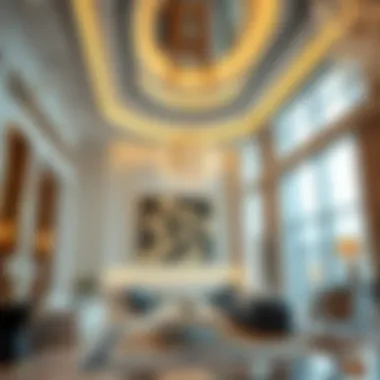
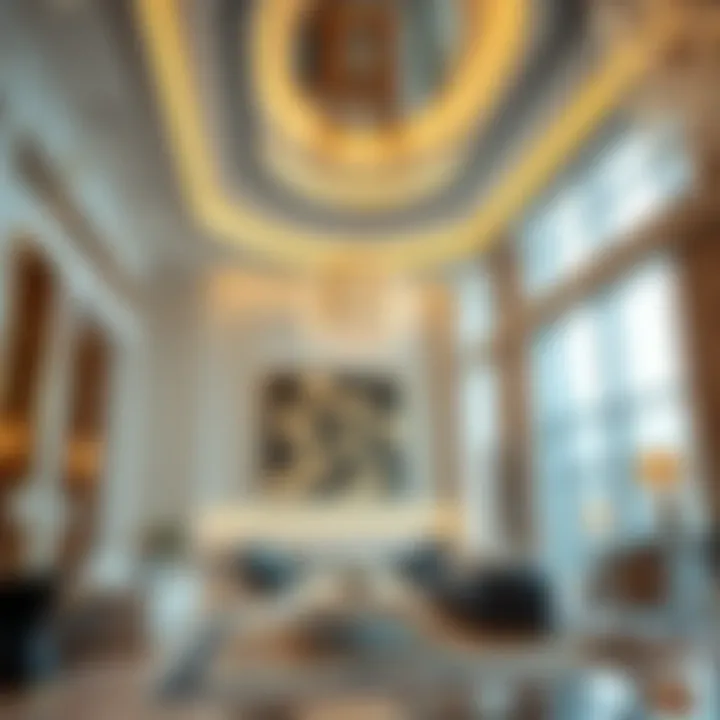
Economic Impact of Al Mansour Tower
The discussion about the economic impact of Al Mansour Tower is not just about numbers and figures; it’s about understanding the fabric of local and regional economic landscapes that this towering structure contributes to. In the heart of a bustling Dubai, the tower stands as a pillar of influence on multiple levels, extending beyond mere construction into realms of real estate, employment, and investment.
Influence on Local Real Estate Market
Al Mansour Tower has made a profound impact on the local real estate market. The construction of such an iconic building not only elevates the prestige of its surroundings but also boosts property values significantly. Just like a rising tide lifts all boats, the establishment of this tower has created a ripple effect in the housing sector, influencing nearby property prices and attracting new developments in the vicinity.
- Increased Demand: Due to its architectural appeal and prime location, the tower has spurred a surge in demand for both residential and commercial spaces in its vicinity. Investors are keen on properties nearby, making them a hot commodity.
- Gentrification: Communities around the tower have started to see gentrifying movements, as existing properties are renovated, and new ones arise to cater to a more affluent crowd. This sometimes leads to debates about local culture and affordability, signaling potential shifts in community dynamics.
The presence of Al Mansour Tower not only draws attention from residents but also from international investors, eager to stake their claim in Dubai's rapidly shifting landscape.
Job Creation and Investment Opportunities
The ripple effects of Al Mansour Tower extend directly into job creation and investment opportunities. When a major construction project like this commences, the influx of jobs serves as a catalyst for the local economy.
- Direct Employment: The construction phase employed thousands of workers, ranging from skilled laborers to specialized engineers. Upon completion, the tower continues to offer jobs across various sectors, from management to maintenance.
- Indirect Employment: Nearby businesses also benefit. Restaurants, shops, and service providers see increased patronage. This creates jobs that help sustain the community, improving overall economic health.
- Attracting Investments: The tower has turned the eyes of investors towards Dubai. With its opening, foreign and local investors are more likely to pour money into surrounding neighborhoods and ventures, fueling further growth.
In essence, Al Mansour Tower does more than just grace the skyline; it serves as an economic catalyst fostering growth, innovation, and collaboration in Dubai's vibrant landscape.
Cultural Significance
Cultural significance of Al Mansour Tower goes beyond just being a tall structure touching the sky. It forms a vital part of Dubai’s narrative, a city renowned for its rapid rise and integration of modernity with traditional values. The tower symbolizes a harmonious blend of diverse elements that reflect the city's multicultural fabric, making it resonate deeply with both locals and visitors.
Symbolism in the Local Community
In the heart of Dubai, Al Mansour Tower stands as a beacon of aspiration and progress. For the local community, this architectural marvel represents more than just glass and steel; it's a mirror reflecting the ambitions of a nation. From its imposing height to its intricate design, it speaks volumes about Dubai's journey from a modest fishing village to a global hub.
- Unity in Diversity: The tower encapsulates the idea that cultures can coexist and flourish. With influences from various architectural styles, it reminds residents of the rich, interwoven tapestry of lives and traditions that form the city. Its design encourages both residents and tourists to appreciate the array of customs and practices that coexist in Dubai.
- Cultural Milestones: Local events often find a stage around or within the tower, be it art exhibitions or cultural festivals. This involvement nurtures a sense of pride among the Emirati people and fosters community spirit.
In short, Al Mansour Tower isn’t just a presence in Dubai’s skyline; it is a symbol of unity and cultural momentum that resonates with the identity of a rapidly evolving city.
The Tower's Role in Tourism
The allure of Al Mansour Tower extends far beyond its impressive visage. It has become a significant tourist destination, attracting every corner of the globe. Its role in tourism is multifaceted; hence, it contributes substantively to the local economy.
- Landmark Attraction: Tourists are always on the lookout for the next iconic spot to explore. Al Mansour Tower serves this need perfectly. As a landmark, it draws photographers, architects, and wanderers alike, eager to capture its essence and story.
- Accessibility and Experience: The tower’s design includes visitor-friendly spaces such as observation decks and interactive displays that offer an enriched experience. Visitors get to engage not only with the structure but also with Dubai’s vibrant culture. Educational programs and guided tours provide insights into the history and architecture of the building, enhancing the overall tourist experience.
"It’s not just about seeing a building; it’s about experiencing a part of Dubai’s soul.”
Thus, Al Mansour Tower is not merely a monument of urban architecture; it's a vital cog in the wheel of tourism, enhancing Dubai’s appeal as a globe-trotting hotspot. Its cultural significance cannot be overstated, as it fosters connections, ignites interest, and promotes exploration among those who come to marvel at its grandeur.
Future Prospects for Al Mansour Tower
The Al Mansour Tower, already a notable part of Dubai's skyline, is poised to evolve further with a series of anticipated advancements. This section delves into the upcoming developments and the potential shifts in market dynamics that could influence both the architectural landscape and the economic environment surrounding the tower.
Upcoming Developments
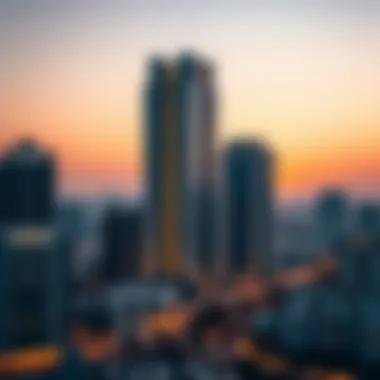
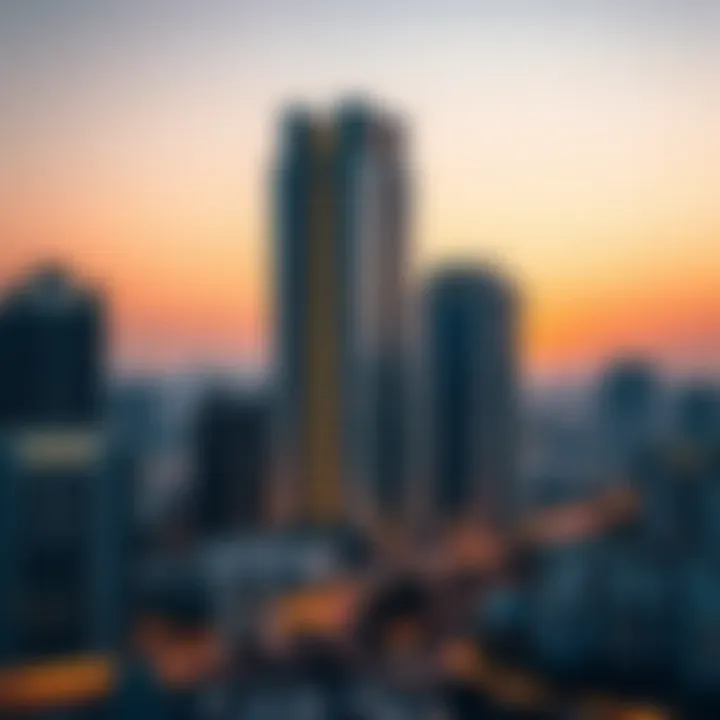
As Dubai continues to grow and modernize, Al Mansour Tower is expected to undergo several upgrades and expansions. Notably, plans are in motion for the introduction of mixed-use spaces that could offer retail, dining, and entertainment options alongside the existing business facilities. This shift aims at enhancing the tower’s appeal to a broader audience, transforming it from merely an office building into a dynamic hub where work and leisure interlace.
Some key aspects of these developments include:
- Enhanced Amenities: Developers are looking into adding high-end restaurants and boutique outlets to cater to both residents and visitors. This change could potentially make the tower a destination in its own right, enhancing foot traffic and engagement.
- Green Spaces: With a growing emphasis on sustainability, plans are underway to incorporate green rooftops and terraces which will not only beautify the space but also provide much-needed areas for relaxation amidst the bustling city.
- Technological Upgrades: The integration of smart building technologies to improve energy efficiency, security, and connectivity is on the horizon. Features such as smart elevators and efficient HVAC systems will set a new standard in modern building management.
Overall, these developments are set to significantly boost the tower’s profile in Dubai, appealing to both international investors and local enterprises.
Potential Changes in Market Dynamics
As these changes unfold, they are likely to impact the local real estate market in several ways. Investors should look closely at these evolving dynamics to understand how they might influence their strategic decisions.
Factors to consider include:
- Supply and Demand Balance: With new amenities and features, there's a good chance that demand for space in and around Al Mansour Tower will increase. A spike in demand could lead to higher rental and property values, particularly if the tower establishes itself as a sought-after locale.
- Attracting a Diverse Demographic: By diversifying its offerings, the tower could attract an array of tenants including tech startups, creative agencies, and upscale retailers, which may further diversify Dubai’s economic base.
- Competitive Landscape: As Al Mansour Tower enhances its appeal, it's crucial to monitor competitor structures in the vicinity. Others may respond with their own renovations or amenities, which could modify the market’s competitive dynamics by creating a ripple effect across the neighborhood.
Comparison with Other Notable Structures
The juxtaposition of Al Mansour Tower with other prominent edifices in Dubai offers a compelling perspective on its architectural merit and significance. By comparing and contrasting these structures, we gain insights into the evolution of Dubai’s skyline and the unique features that set Al Mansour Tower apart. This section explores not only the aesthetic similarities and differences but also how these buildings collectively contribute to the identity of the city.
Similarities and Differences
One can find common ground among many skyscrapers in Dubai, such as the Khalifa Tower and the Burj Al Arab, with each structure showcasing an element of opulence and modern design. However, Al Mansour Tower distinguishes itself in several key ways:
- Design Aesthetics: While the Khalifa Tower boasts an upward-reaching spire, Al Mansour Tower features a broader base and unique, flowing contours that suggest a sense of movement.
- Cultural Integration: Al Mansour Tower often draws inspiration from traditional Arabic architectural motifs, setting it apart from the modernist approaches of its counterparts.
- Sustainability Features: Unlike many other notable Dubai towers, Al Mansour is committed to implementing cutting-edge sustainability practices, aiming to minimize its carbon footprint while promoting eco-friendly initiatives.
These contrasts not only highlight the distinctiveness of Al Mansour Tower but also reflect broader trends in architectural design and urban planning in Dubai.
Impacts on Dubai's Skyline
The presence of Al Mansour Tower in the skyline significantly amplifies the architectural narrative of Dubai. This structure, along with others, has shaped not only the physical landscape but also the perception of the city globally.
- Landmark Status: Al Mansour Tower stands as a recognizable landmark, a symbol that defines the horizon and contributes to the city’s branding as a global hub.
- Cohesion with Urban Planning: The strategic placement of Al Mansour within the greater urban plan displays an understanding of spatial relationships among structures, enhancing the overall symmetry of the skyline.
- Tourism Magnet: The unique design and cultural resonance of Al Mansour Tower attract tourists, offering them a fresh perspective of modern Dubai infused with heritage.
"Architectural structures do not merely occupy space; they create it. Al Mansour Tower does exactly that, artfully weaving itself into the narrative of Dubai's growth and transformation."
In summary, comparing Al Mansour Tower to other noteworthy structures elucidates its unique traits while underlining its vital role in the broader narrative of Dubai’s architectural voyage. Investors, architects, and urban planners alike can draw valuable lessons from this comparison, especially regarding the significance of harmonious design in a bustling metropolis.
Epilogue
The conclusion of this examination is crucial in cementing the significance of Al Mansour Tower within the broader context of Dubai’s architectural and economic growth. With a towering presence amidst the skyline, the tower not only showcases advanced engineering and aesthetic finesse but also serves as a vital symbol of the city’s ambition.
Summary of Key Findings
A few key takeaways from this analysis include:
- Architectural Brilliance: The design employs a mix of modern and traditional aesthetics, blending with the cultural fabric of Dubai while pushing the boundary of contemporary architecture.
- Economic Catalyst: Al Mansour Tower has spurred growth in the surrounding real estate sector, enhancing property values and stimulating job creation, which contribute directly to Dubai’s economy.
- Cultural Impact: Reflecting local values and aspirations, the tower stands not only as a structure but as a beacon for tourism and community pride, drawing visitors and potential investors alike.
These points encapsulate the complexities and benefits inherent within the tower's existence and layout, and they elucidate its relevance to various stakeholders.
Final Thoughts
In reflecting on Al Mansour Tower's future, one cannot ignore the dynamically shifting market trends that influence growth. Investors need to consider how emerging technologies in construction and sustainable practices may shape the tower's identity going forward. Moreover, as Dubai continues to evolve, the tower is poised to adapt, ensuring it remains a significant player in Dubai’s ever-changing landscape.
Ultimately, Al Mansour Tower stands as a testament not just to architectural achievement but to the ingenuity and forward-thinking that define Dubai. As we look to the future, its story is still unfolding, offering lessons and opportunities for those who choose to engage with its legacy.







